| HOME |
|---|

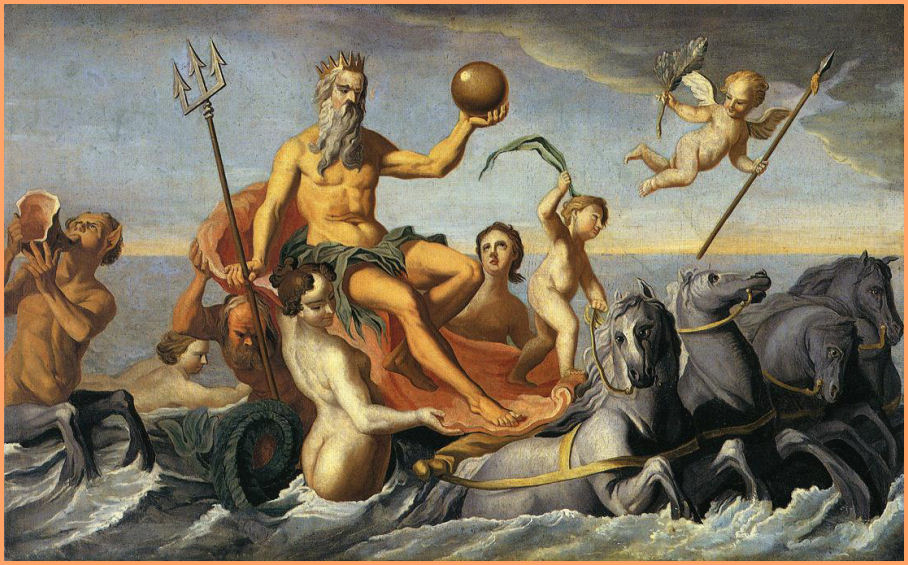
Return Of Neptune, John Singleton Copley, 1754.
| HOME |
|---|


To the Greeks he was Poseidon, to the Romans, Neptune, and his power was second only to Zeus (Jupiter), king of the gods. Jupiter and Neptune were brothers, sons of Saturn, and while Jupiter held dominion over the earth and the sky, Neptune ruled the oceans, and resided in the cold, dark depths of the deep.
Like its mythological namesake, the planet Neptune also resides in the cold dark depths - of the solar system. At the astounding distance of 2.8 billion miles from the Sun, Neptune is the last and farthest of the gas giants found in the outer solar system. It is so far away from the Sun that its surface temperature never gets above -364 ° F (-220 ° C), and the reflected sunlight bouncing off its surface - which travels at a speed of 670 million mph - takes over four hours to reach Earth. This means that from Earth all we can ever see is what Neptune looked like four hours ago.
The only spacecraft to ever visit Neptune was NASA's Voyager 2. It left Earth in 1977, and after twelve years speeding through space, finally reached our solar system's most distant planet in August, 1989, making Neptune the farthest object ever surveyed up close by human technology. The photo below was taken as Voyager 2 approached Neptune from a distance of 4.4 million miles.
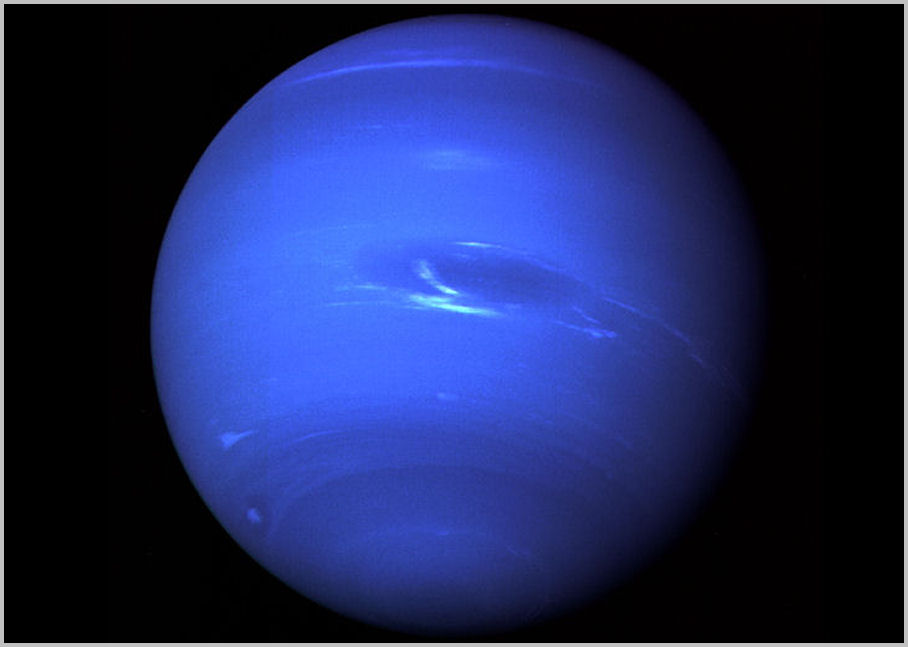
Neptune is so far away that even the extraordinary resolving power of the great Hubble Space Telescope is limited in the detail it can capture. In the Hubble photos below, spanning a period of six years, cloud formation appears to increase significantly, dramatically increasing the surface brightness of the planet.
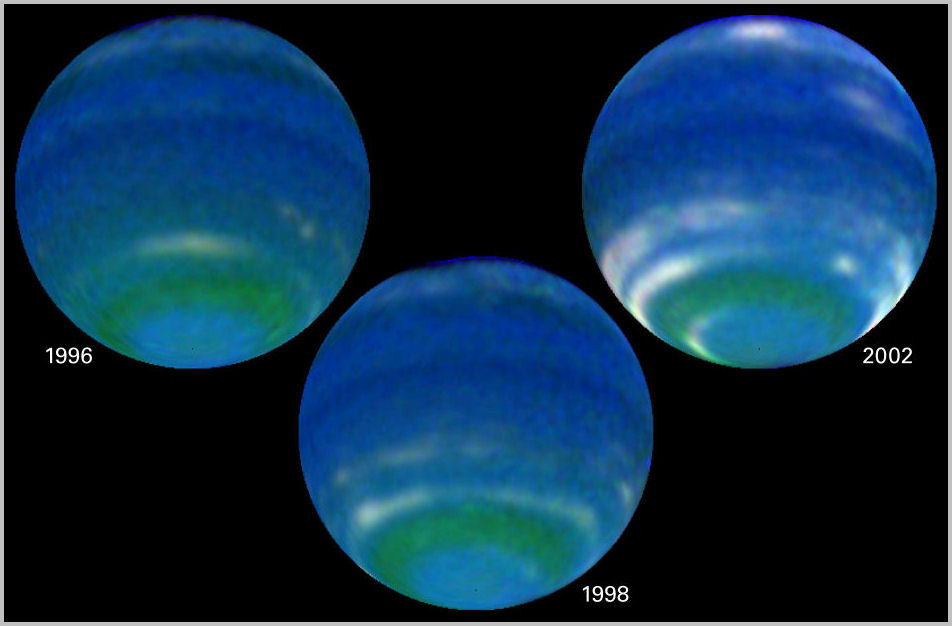
Neptune was the first planet discovered by calculation, rather than observation. In 1846, scientists were perplexed because Uranus didn't follow the orbit it was mathematically predicted to. It was proposed that its deviations might be caused by the gravitational pull of another planetary body, outside its orbit, and the location of that body was carefully calculated. When telescopes were pointed in that direction - there was Neptune!
Neptune takes 165 Earth years to complete one of its years - one orbit around the Sun - and in 2011 Neptune completed its first orbit since its discovery in 1846. One day on Neptune lasts 16.05 hours.
Neptune is the smallest of the gas giants, slightly smaller than Uranus. Still, with a diameter of 31,410 miles (50,538 kms), 60 Earths could fit inside it.
Neptune is composed largely of hydrogen and helium, as all the gas giants are, but like Uranus, it also has enough methane to give it a distinctly blue appearance. At it closest approach, Voyager 2 was a mere 3000 miles from the planet, and captured some stunning photos of clouds, estimated to be floating about 30 miles above the surface.
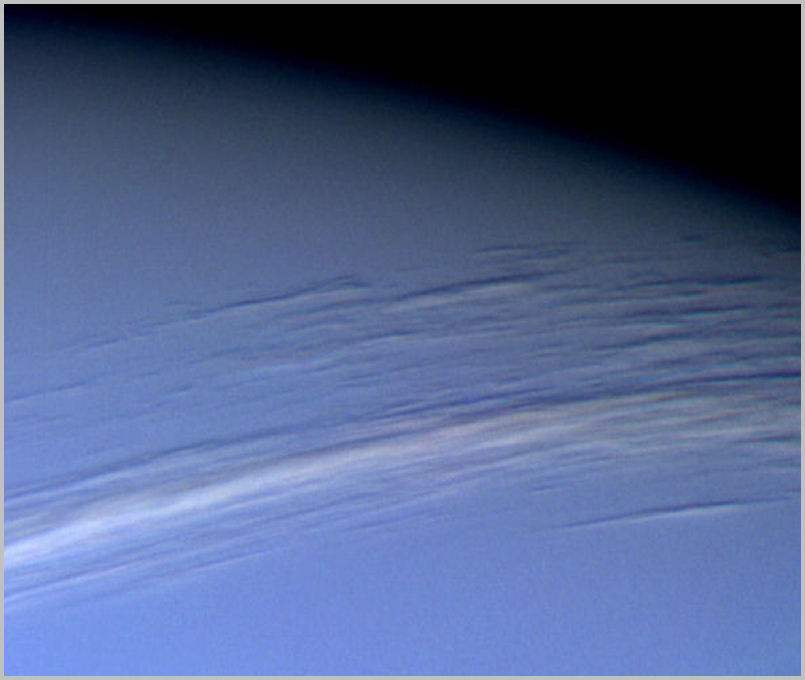
Voyager 2 discovered that Neptune was circled by a set of rings just as the other three gas giants are. By masking the bright face of the planet, it was able to capture the faint rings, shown below.
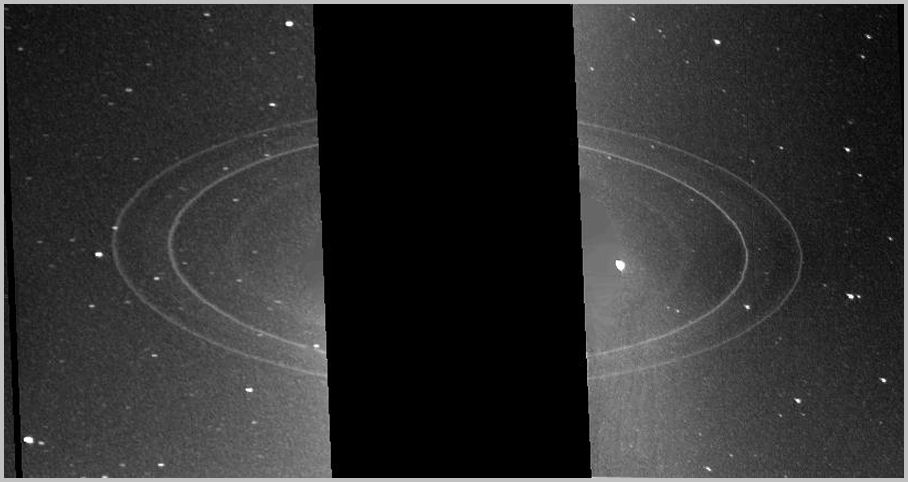
Neptune has 13 moons, one of which, Triton, with a diameter of 1,680 miles (2,700 kms), is almost as large as Earth's Moon. Pictured below in a photo by Voyager 2, Triton is the coldest measured object in the solar system, with a surface temperature of -391 ° F (-235 ° C). It is also the only large moon in the solar system that orbits its host planet in the opposite direction to the planet's rotation, referred to as a retrograde orbit.
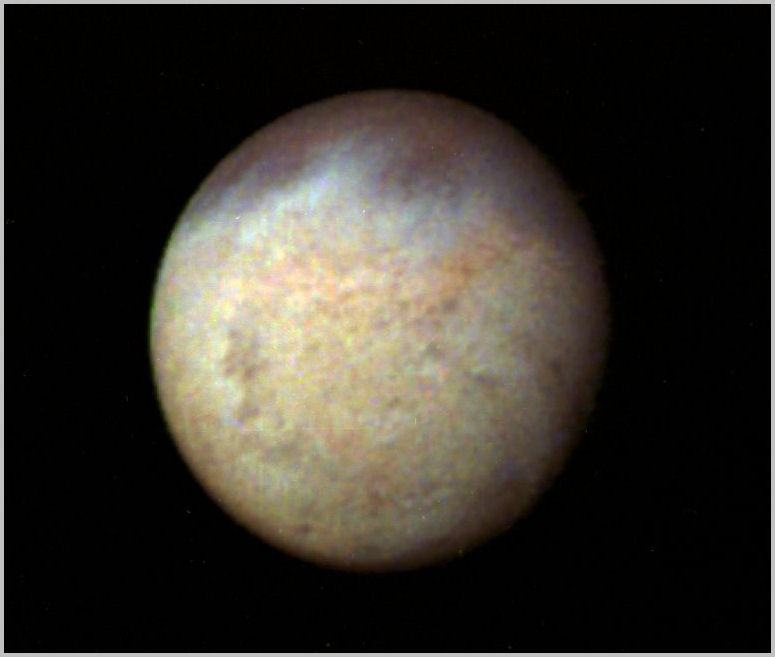
Because of its great distance, the reflected sunlight from Neptune only reaches magnitude 7.9, well beyond naked eye visibility. Even with a telescope, finding Neptune is a challenge. Unlike Uranus, which is about a billion miles closer, you can see no discernible planetary disk in a backyard telescope. Neptune looks just like a tiny blue star, hard to distinguish from all the stars around it. The only difference is, if you view it regularly, you will see it slowly change position against the background of fixed stars. As with Uranus, finding Neptune requires a finder chart, such as that offered by NakedEyePlanets.com.
|
|
|
| SOL | MERCURY | VENUS | EARTH | METEORS | MOON | MARS | ASTEROIDS | JUPITER | SATURN | URANUS | NEPTUNE | PLUTO | COMETS |
|
|
|